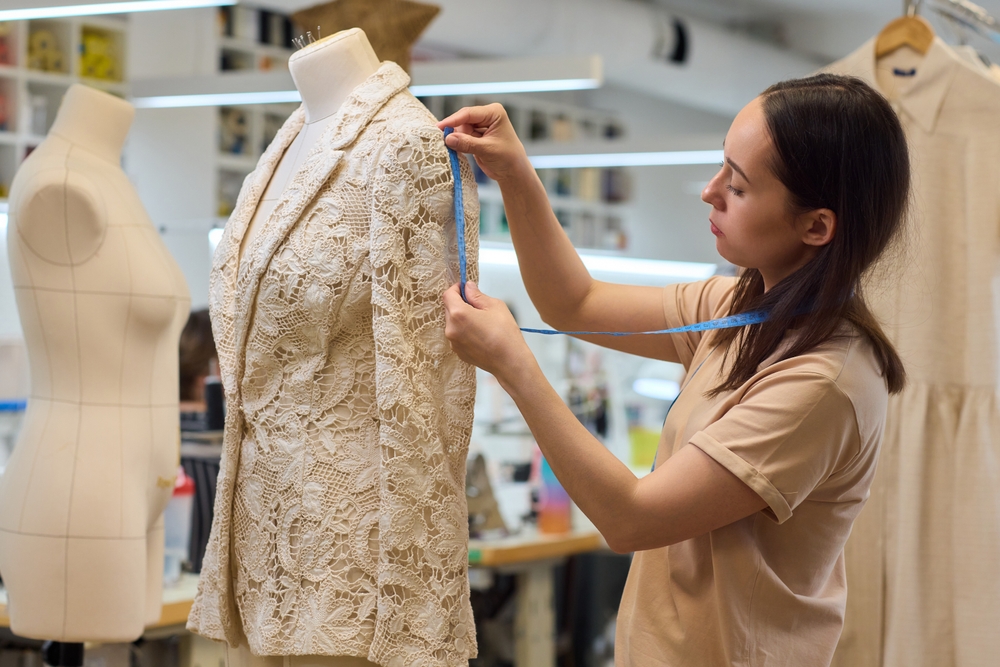General Information on Seamstress Career Paths
Working as a seamstress involves tasks related to textiles and garment creation, such as sewing, fabric preparation, taking measurements, and using sewing machines to produce finished items according to established methods. For beginners, structured training programs and hands-on practice provide opportunities to learn skills gradually and build confidence in the role. By understanding common responsibilities, training options, and standard practices, individuals can gain a clearer idea of how to start in this field. Some roles may provide flexible schedules or entry-level opportunities that do not require prior certification, making it easier for newcomers to begin. As experience is gained and skills improve, seamstresses can progress to more advanced tasks and work with a wider variety of techniques and materials.

What Are the Key Tasks and Responsibilities in Seamstress Roles?
Seamstress positions involve a diverse range of responsibilities centered around textile manipulation and garment creation. Daily tasks typically include operating sewing machines, cutting fabric according to patterns, and taking precise measurements for custom fitting. Many seamstresses work with various materials, from delicate silks to heavy denim, requiring adaptability and technical expertise.
Quality control forms another essential aspect of these roles, as seamstresses must inspect finished products for defects, ensure proper stitching, and make necessary adjustments. Pattern reading and interpretation skills prove crucial, as workers must translate two-dimensional designs into three-dimensional garments. Additionally, many positions require maintaining equipment, organizing workspaces, and collaborating with team members in production environments.
How Do Current Trends in Textile and Garment Work Affect Career Options?
The textile industry continues evolving with technological advances and changing consumer preferences. Sustainable fashion has become increasingly important, creating demand for seamstresses skilled in eco-friendly materials and repair techniques. This trend toward garment longevity and customization offers new opportunities for skilled professionals.
Digital pattern-making software and computerized sewing machines are transforming traditional methods, requiring workers to adapt to new technologies. Fast fashion’s influence has created demand for quick production capabilities, while simultaneously, the slow fashion movement emphasizes quality craftsmanship and attention to detail. These contrasting trends provide diverse career paths for seamstresses with different skill sets and interests.
Are There Flexible Scheduling Options for Seamstress Positions?
Many seamstress positions offer scheduling flexibility, particularly in smaller operations and custom tailoring businesses. Freelance work provides significant schedule control, allowing experienced seamstresses to manage their own client base and working hours. Some manufacturing facilities offer shift options, including part-time positions and flexible start times to accommodate different lifestyle needs.
Home-based work opportunities have expanded, especially for specialized services like alterations, custom sewing, or small-scale production. Seasonal demand in certain sectors, such as formal wear or costume design, can create project-based work that fits non-traditional schedules. However, scheduling flexibility often correlates with experience level and specialization, with entry-level positions typically requiring more structured hours.
Do Entry-Level Seamstress Roles Require Prior Certification?
Many entry-level seamstress positions welcome candidates without formal certification, focusing instead on basic sewing skills and willingness to learn. Employers often provide on-the-job training for specific techniques, equipment operation, and quality standards. However, demonstrating fundamental sewing abilities through personal projects or basic coursework can significantly improve employment prospects.
Some specialized areas, such as industrial sewing or technical textiles, may require specific certifications or safety training. Additionally, positions in luxury fashion houses or specialized tailoring shops often expect higher skill levels, even for entry-level roles. Apprenticeship programs provide another pathway, combining practical experience with structured learning without requiring prior certification.
What Training Opportunities Exist for Learning Sewing and Garment Production?
Various training pathways accommodate different learning styles and career goals. Community colleges frequently offer textile arts programs, fashion design courses, and continuing education classes focused on specific techniques. These programs typically combine classroom instruction with hands-on practice using professional equipment.
Vocational schools provide intensive training programs designed for rapid skill development and job placement. Online courses and tutorials have become increasingly popular, offering flexibility for self-paced learning. Traditional apprenticeships with experienced seamstresses or tailors provide comprehensive training while earning income. Additionally, some manufacturers offer specialized training programs for workers interested in industrial sewing techniques and large-scale production methods.
| Training Type | Duration | Typical Cost Range | Key Benefits |
|---|---|---|---|
| Community College Program | 6 months - 2 years | ¥200,000 - ¥800,000 | Structured curriculum, equipment access |
| Vocational Training | 3-12 months | ¥150,000 - ¥500,000 | Job-focused skills, placement assistance |
| Online Courses | Self-paced | ¥10,000 - ¥100,000 | Flexible scheduling, varied skill levels |
| Private Workshops | 1 day - 3 months | ¥5,000 - ¥200,000 | Specialized techniques, small class sizes |
Training costs and salary information mentioned here are general estimates based on industry standards and may vary significantly by location, institution, and program specifics. Prospective students should research current local options and requirements in their specific area.
The seamstress profession offers diverse career possibilities, from traditional tailoring to modern textile innovations. Success in this field typically combines technical proficiency with creativity and attention to detail. While entry-level opportunities exist without formal certification, continued skill development through training and experience enhances career prospects and earning potential. As the textile industry continues evolving with new technologies and consumer preferences, seamstresses who adapt to changing trends while maintaining quality craftsmanship will find the most opportunities for career advancement.




